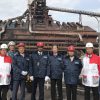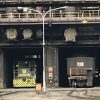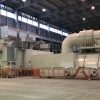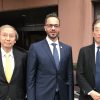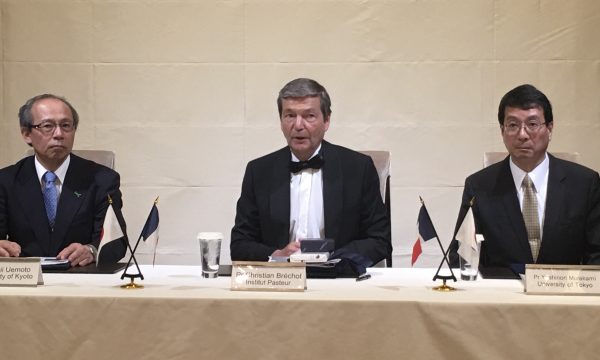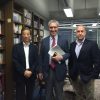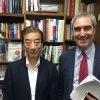On the 11th of December (Sunday), three friends of mine and I were invited to a day-long tour of the Hamaoka nuclear reactor owned by Chubu Electric Company.
We had been invited to look at the upgrades made to the facility in light of the Fukushima nuclear disaster. These changes included installation on five new generators, a wall to protect against tsunamis , and the elevation of several critical pieces of equipments and facilities, and generator-trucks along with fire-engines.
With reactors 1 and 2 slated for decommissioning and reactors 3, 4 and 5 slated for restarting, these preparations are being carried out with the utmost care. We went inside the reactors 3 and 4, and immediately we noticed the extensive reinforcement to the buildings. I noticed the structures that had been added on to aid complex repairs. We traipsed up and then down again along very narrow stairways, with various pipes running along the walls and then off in different directions. It was all extremely complex. While gazing down at the pool that held the spent fuel rods, I asked them for an explanation as to why a similar cooling pool at the Fukushima Daini Plant had lost a significant amount of water during a low activity seismic event.
Having seen for myself the intricate maze created by the criss-crossing pipes, wiring and equipment, I could not but help think of what would happen in less-than optimal situations, like when there are power cuts, earthquakes, fires, tsunamis, thunderstorms, cyclones, or even when it is dark outside. I wonder how the people tasked with maintaining this behemoth would be able to work in cooperation with each other on this complex yet delicate machinery. My intuition keeps me pessimistic.
Human beings have always sought to create megastructures to astound people, and more importantly, to establish authority to govern. The Pyramids of Egypt, the Great Wall of China, the temple at Todaiji housing the immense bronze statue of Buddha, the Versailles Palace, the Forbidden City all bear testament to this idea. But the nuclear reactor may be a different thing altogether. It is a megastructure, but also has complex and intricate innards. The awe and sheer scale stuns and astounds. And the inevitable question comes to mind: can we humans control and safely harness this power? I shared these thoughts on my Facebook post. Will we be able to maintain control over the Promethean creation that we are unleashing?
On the 13th (Tuesday), I spent a day in Kimitsu City, Chiba Prefecture, with The UAE ambassador to Japan His Excellency Mr. Khaled Omran Sqait Alameri and his entourage touring the Nippon Steel Sumitomo Metal Company (NSSMC) Works and TEPCO Power Plant. These were both megastructures as well.
Interesting fact: Ambassador Alameri studied as an undergraduate, electrical engineering at Tokai University’s School of Engineering during the time that I was dean of the School of Medicine there. It’s nice to be connected in such a way!
